#civettictis civetta
Explore tagged Tumblr posts
Note
🥚? I don't recall when I followed you but I'm glad I did
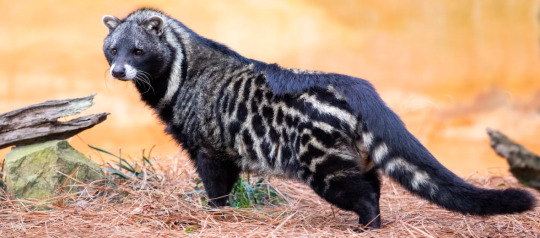
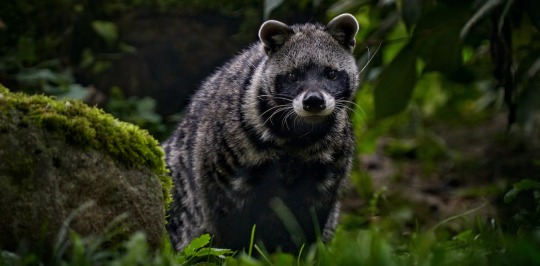
African civet!
(Civettictis civetta)
<3
161 notes
·
View notes
Text

An African civet (Civettictis civetta) in South Luangwa Nature Reserve, Zambia, Africa
by Rob & Sue Brookes
#african civet#civets#viverrids#civettictis civetta#civettictis#viverridae#carnivora#mammalia#chordata#wildlife: zambia#wildlife: africa
96 notes
·
View notes
Text
Viverrid skulls
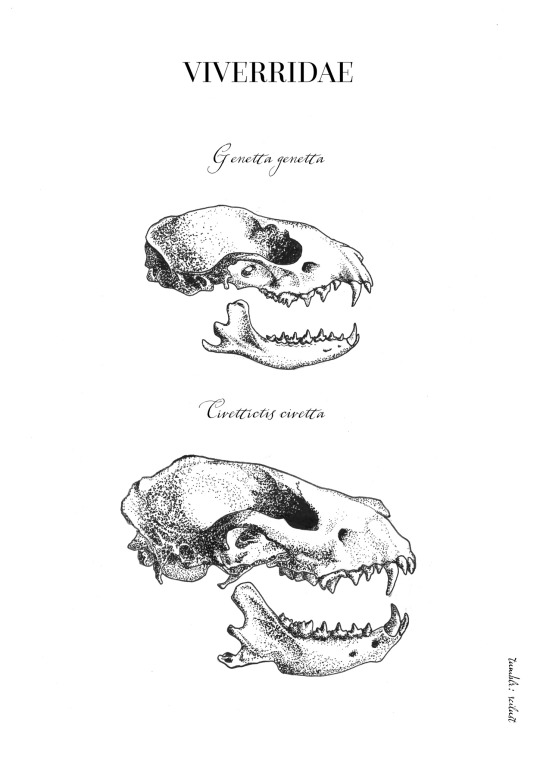

If you’d like these as a print, check out my online store (now with a 35% discount!)
#scientific illustration#scientific art#science#zoology#biology#viverrid#viverridae#gineta#genet#civet#genetta genetta#civettictis civetta#fauna#my art#scillust#vulture culture#vulture core#goblincore#crowcore
25 notes
·
View notes
Text

Animal of the day: African civet! (Civettictis civetta) Though it may look like a skunk or cat-like creature, this animal is in fact part of its own lineage called the viverrids! It is related to other feliform mammals such as the binturong, mongoose and meerkat! The African civet is mostly nocturnal, coming out at night to feed on fruits, eggs, certain species of insects and carrion! Image source: https://en.wikipedia.org/wiki/African_civet
24 notes
·
View notes
Text

Civettictis civetta. Struik Pocket Guides for South Africa: Mammals. Written by John Skinner. Illustrated by Penny Meakin. 1988.
Internet Archive
183 notes
·
View notes
Text

Skeletal restoration of Vishnuictis, a giant Plio-Pleistocene viverrid that lived in what is now the Sivaliks Hills of India. Since there have been no restorations of this creature like this made before, I decided to base its skeletal anatomy off of Civettictis civetta and Viverra zibetha. With a head-body length of about 1.5-2.4 meters long with a 1-meter-long tail, and weighing about 290-300 kg, Vishuictis was much larger and more predatory than other viverrids, and it was the main predator of the Pliocene Pinjor Formation, preying on elephant calves, pigs, deer, and possibly calves of the giant giraffe Sivatherium.
#paleoart#paleontography#paleontology#viverridae#vishuictis#skeletal reconstruction#skeletal#pliocene#pleistocene
7 notes
·
View notes
Text

The African civet (Civettictis civetta) is a medium-sized, nocturnal mammal native to sub-Saharan Africa, recognized for its distinctive appearance, featuring a cat-like body, elongated face, and prominent facial markings, along with a long, ringed tail. It is known for its unique scent gland secretions, which have historically been used in the perfume industry. African civets primarily inhabit tropical forests, savannas, and grasslands, where they are omnivorous, feeding on a diverse diet that includes fruits, small mammals, insects, and more. They are solitary creatures, marking their territory through scent marking and are considered important for the ecological balance, especially in seed dispersal.
0 notes
Link
#Gyeni river forest reserve#gyemira forest reserve#large mammals#moist semi-deciduous zone#off-reserve area
1 note
·
View note
Text
Carnivores of Ouganda a bit less mysterious?
league-scientifique
Fri May 13, 2022 2:57 am
Sustainable management and survey of carnivore populations are one of the main activities in current zoology. Terra Reserves could be a potentially new association for conserving wild places and dwellers that haunts these areas. We hypothetically travel to little explored regions of East Africa, covered mainly with protected areas of tropical forests, known as Murchison-Semliki Landscape. Another information is needed from other parts of the country. There are recommendations for census of carnivores in Lake Wamala region (wetlands) and Entebbe Wildlife Sanctuary (wooded savannas) of Central Ouganda. Partnership in ad hoc projects is a panacea for long-term research.
As for ecosystem of Ouganda, of the species of large carnivores are spotted hyena (Crocuta crocuta) and wild dog (Lycaon pictus) as well as medium-size carnivores known for this part of the continent, namely, ratel (Mellivora capensis), spotted-necked otter (Hydrictis maculicollis), serval (Leptailurus serval), side-striped jackal (Canis adustus) and african civet (Civettictis civetta). Those creatures should be studied in the name of conservation in the region called western and central part of Ouganda. Cage traps and leg-hold traps, as well as scent baiting could be used for catching wild beasts alive for telemetry study. Other stuff or methods such as camera traps and scat samples could be used for estimating diet, presence-absence and occupancy modeling and other issues. As for paraphrase, it is a new non-equilibrium paradigm for understanding and managing carnivore fauna of Ouganda.
Posted by author and biologist / Tomek Pietrzak (@gnhi projekt). Available by Creative Commons licence. The text is in part of natural history and zoological perspective. For more please visit texts from informal group for environmental challenges.
0 notes
Text
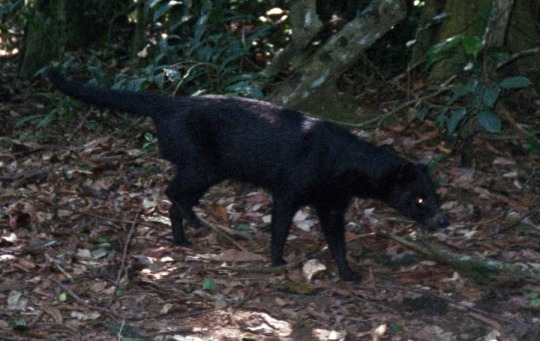
Melanistic African civet (Civettictis civetta) [x]
532 notes
·
View notes
Text


African Civet, Civettictis civetta (c.1720-1790) - Peter Paillou
#Wonder Rooms#Cabinet of Curiosities#Public Domain#18th Century#Scientific Illustration#Scientific Painting#Animal Art#Natural History#Zoology#Animalia#Peter Paillou#Mammalia#Carnivora#African Civet#Civettictis civetta
219 notes
·
View notes
Text
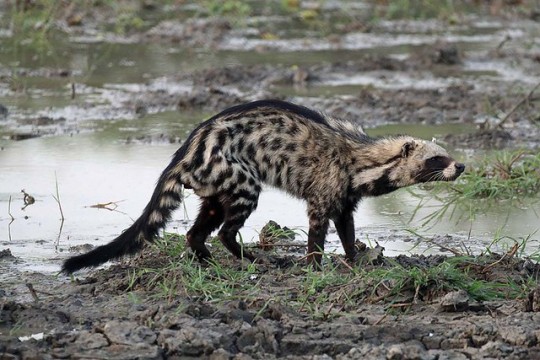
An African civet (Civettictis civetta) by the Bahr Dikere in Zakouma National Park, Chad
by inyathi
#african civet#civets#viverrids#civettivtis civetta#civettictis#viverridae#carnivora#mammalia#chordata#wildlife: chad#wildlife: africa
1K notes
·
View notes
Text

African civet (Civettictis civetta)
2K notes
·
View notes
Text

Civettictis civetta
128 notes
·
View notes
Photo
African Civet (Civettictis civetta)

African Civet Civettictis civetta Source: Here
1K notes
·
View notes
Text

AFRICAN CIVET
Scientific Name: Civettictis civetta
Family: Viverridae
Class: Mammal
Height (at shoulders): 60 in. (40 cm)
Weight: 15-43 lbs (6.8-20 kg)
Tail Length: 13-19 in. (33-48 cm)
Top Speed: 326 m/h (metres/hour)
Lifespan: 15-20 years
Origin: Sub-Saharan Africa
Diet: Omnivores- Carrion, rodents, birds, eggs, reptiles, frogs, crabs, insects, fruits, and other vegetation
Behavior: Nocturnal, solitary except when breeding, and use visual, olfactory, and auditory forms of communication
Offspring: 1-4 cubs per litter, up to 4 times a year


#aminals#agere animal cards#agere#age regression#petre#pet regression#card: african civet#class: mammals
7 notes
·
View notes